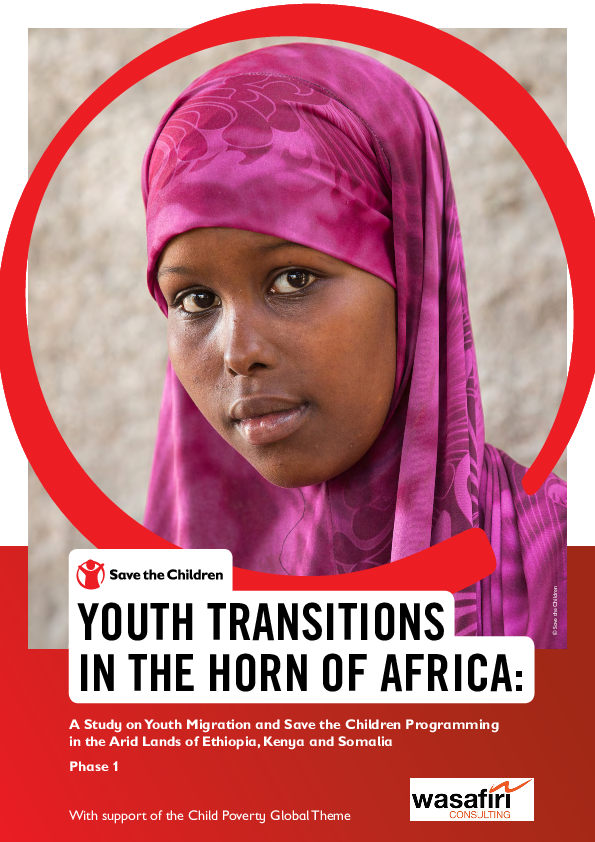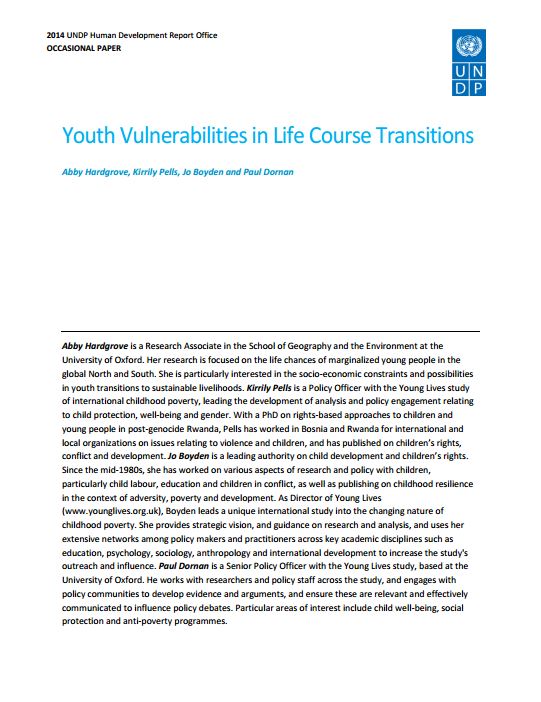
Study: Research
Youth Transitions in the Horn of Africa: A Study on Youth Migration and Save the Children Programming in the Arid Lands of Ethiopia, Kenya and Somalia
Publication year:
2017
English
Format:
pdf (4.2 MiB)
Publisher:
Save the Children
A major shift in humanitarian approaches to protracted crises began following the 2010/11 drought in the Horn of Africa (HoA). The scale of the suffering combined with the failure of the international humanitarian system and governments in the region to react early enough to prevent huge loss of life and livelihoods led to a new focus on building the resilience of pastoralist and agro-pastoralist communities in the drylands. This was accompanied by a large-scale investment in the establishment of safety net systems to protect the most vulnerable, including mechanisms to rapidly scale up humanitarian responses to extreme shocks. Six to seven years on, the region is experiencing another severe drought. Whilst safety nets and increased investment in resilience-building have enabled pastoral communities to cope better with the drought, there have nonetheless been high levels of migration (particularly among youth) to urban areas. Youth are migrating because of aspirations of a more modern lifestyle, however, they are met with limited opportunities for employment and education in the cities. Current systems that should be in place for migrating youth are failing to create an environment for successful transitions.
This research on youth transitions used a mixed methods approach combining a literature review (of external and internal literature), interviews with Save the Children staff and key external stakeholders and fieldwork in Wajir, Kenya. The main body of this report is divided into two parts:
Part 1: Explores the changing context in the drylands across the HoA including the factors driving migration, government policies and plans related to youth migration and associated changes in the pastoralist systems, livelihood diversification, and youth employment.
Part 2; Explores Save the Children’s urban programming with youth including livelihoods, education, protection and health programming. It draws from examples across the region including from field research in Wajir.
Finally, gaps and areas that need more analysis are drawn out in the last section which suggests areas of focus for the second phase of this research.
Read full abstract
Authors
View & Download
Document information
Publisher
Authors
Format
Content type
Region
Topics
Rights
© Author/Publisher
Keywords
Found a mistake? Help us improve!
If you have noticed a document assigned to the wrong author or any other inaccuracies, let us know! Your feedback helps us keep our data accurate and useful for everyone.
Related Documents
Share
Link

